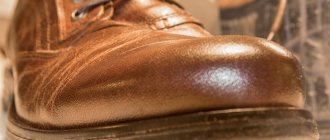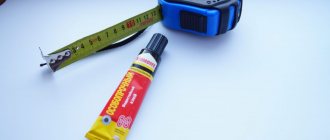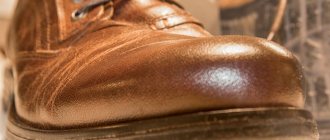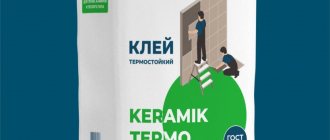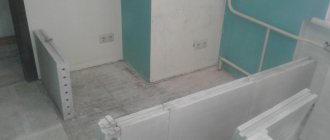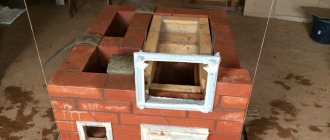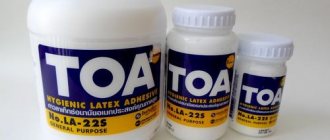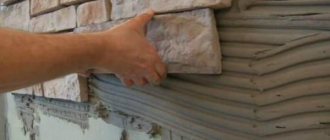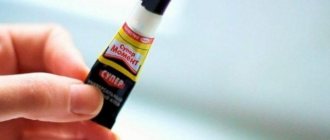Cyanoacrylate is an adhesive based on cyanoacrylic acid esters. This is a material for quickly gluing parts together. It is widely used in everyday life under commercial names such as “Superglue”, “Second” and so on.
The cyanoacrylate adhesive was created during World War II for the rapid assembly and repair of military equipment such as plastic telescopic sights.
The creator of the glue, Harry Coover, initially rejected his product due to too high adhesion. After the end of the war, Coover rethought the commercial potential of cyanoacrylate glue and returned to development.
In the second half of the 20th century, cyanoacrylate glue gained popularity as a means for quickly gluing together parts in everyday life and in industry.
Origin story
In 1942, for the needs of the American military industry, Eastman Kodak conducted research on creating transparent plastic for optical sights. Cyanoacrylates were considered as one of the options for this. However, they turned out to be unsuitable - under the influence of moisture, these compounds became sticky.
It took 16 long years to refine the recipe and production technology, and in 1958 Eastman 910 appeared on the market - the first cyanoacrylate adhesive for mass use. However, this composition did not immediately gain popularity. Two events saved the situation.
In one of the live TV shows, a metal cable descending from above and a metal rod were glued together within a few seconds using a few drops of the compound. This joint supported the weight of two grown men who stood up holding a rod above the stage.
Later, Eastman Kodak held a promotional event in which a truck crane used glue to lift a car off the street.
How to remove super glue from plastic
Dimexide. The most effective super glue removers, such as acetone and WhiteSpirit, dissolve the plastic or change its color. And abrasive methods using scrubs, salt or ground coffee cause irreparable harm to the appearance of the plastic, scratching it. Therefore, it is best to use Dimexide, which can be purchased at a pharmacy. It's not as concentrated as dimethyl sulfoxide, which dissolves super glue in seconds, but it will be enough. Moreover, it is difficult to obtain dimethyl sulfoxide in its pure form, because it is used in the chemical industry. To remove super glue using this product, you should rub, but do not soak the stain in it, otherwise the plastic itself may also dissolve.
Acetone. Because it may change the color of the plastic, so try it on some inconspicuous part of the plastic before using it. Then, rub the super glue until it comes off. Don't soak! Ethanol. Works best on plastic, does not dissolve it and does not change its color. However, super glue does not dissolve very quickly.
Properties
In the liquid state, the adhesive consists of cyanoacrylate monomers. The flash point of cyanoacrylate glue is 79 °C. Therefore, it is a flammable substance that should not be handled near an open flame.
Flash point is the minimum temperature at which a condensed substance will ignite in the presence of fire.
Pyrogenic silicon dioxide is used as a buffer substance in the production of cyanoacrylate glue. By mixing cyanoacrylates with silica, the resulting adhesive is viscous. This makes it convenient to use.
Cyanoacrylate monomers polymerize rapidly in the presence of water. During polymerization, the glue hardens and bonds the surfaces.
The sensitivity of cyanoacrylate to water is so high that the reaction of polymerization and hardening of the adhesive begins within a few seconds after exposure of the material to open air.
That is, the natural air humidity is enough to almost instantly start the polymerization of cyanoacrylate glue.
Pros and cons of the drug
The SK preparation is made on the basis of alpha-cyanoacrylic acid ester with the addition of plasticizers to increase the viscosity of the mass. Various components are additionally added to the adhesive mass to ensure adhesive properties, increase the heat or water resistance of the adhesive joint and to increase adhesion to certain materials. Thus, Loctite 406 is intended for polymer products.
The positive qualities of the drug include:
- high resistance to organic solvents;
- electrical insulating properties;
- fast polymerization (second glue lives up to its name - it takes a few seconds to firmly connect surfaces);
- low consumption;
- hypoallergenic (SC is widely used for eyelash and nail extensions);
- ease of use;
- good adhesion to various materials.
An effective remedy has both advantages and disadvantages
But the composition also has disadvantages. These include:
- low resistance to mechanical damage (new modifications of Loctite 401, Loctite 406 and others from the Loctite series provide a fairly strong adhesive joint);
- high price;
- high adhesion to the skin (if you work without protective gloves, the second glue can quickly stick your fingers together, and to separate them you will need special solvents to clean the skin);
- loss of stability during long-term storage of the product;
- upon contact with cotton fabric, it generates heat and can cause fire.
Despite minor drawbacks, the adhesive is very popular among consumers.
Application
Cyanoacrylate glue glues rubber, plastic, glass, and porcelain. It quickly and reliably connects precisely adjacent parts. For example, you can use cyanoacrylate glue to glue a broken handle to a cup. If you do this carefully, the joint will be invisible.
Precise fit of parts is critical to the effective use of cyanoacrylate adhesive.
Adhesives based on cyanoacrylates are used in everyday life and in industry. Application examples:
- For repairing dishes, plastic and rubber household items.
- For repair and assembly of parts in the production of cars and household appliances.
- In modeling for assembling and repairing models.
- For assembling advertising stands and stands.
- For gluing plastic water pipes.
Cyanoacrylate glue is indispensable when you need to quickly and reliably connect parts.
What cyanoacrylate glue glues: scope of application
Most of the superglue is cyanoacrylate and its derivatives, and it is also supplemented with various additives - plasticizers. It is thanks to them that several main areas of use of such glue can be identified. Let's look at what cyanoacrylate-based super glue glues.
For gluing rubber and leather products, it is better to use two-component adhesives
First of all, you cannot do without cyanoacrylate compounds in everyday life. Almost every owner has this glue in their repair kit. Various compositions are used depending on the situation and the material to be glued, although universal adhesives are often purchased for the home.
Not only men use cyanoacrylate glue. It is used in cosmetology, namely during eyelash and nail extensions. Usually they use compositions with an increased amount of acrylic, since they practically do not harm the nails, and are also easily and simply removed using organic solvents.
Cyanoacrylate superglue is indispensable in dentistry. Special compounds are used for gluing small chips. Adhesive is used to create insulation on wires or to ensure a perfect connection. The low likelihood of allergies and biological neutrality make the substance a safe product for use in cosmetology and dentistry.
In everyday life, cyanoacrylate glue is used for gluing almost any surface.
Cyanoacrylate is used with pleasure by radio installers and repairmen of electronic equipment and optical devices. Using this glue you can perform the following procedures:
- glue chips and boards;
- produce thermal resistors and transistors;
- create prefabricated structures from plastic and thermoplastic;
- combine natural fabrics, organic and artificial leather;
- glue foam particles;
- connect surfaces for which permanent color is extremely important.
Varieties
There are one-component and two-component formulations:
The first type is distinguished by the speed of hardening; a thin film-like layer is created that reliably holds objects together.
Secondary two-component compositions are often found in homes; liquid types can close gaps up to 0.5 millimeters, for this they must be slightly viscous. Can be used for gluing rubber, leather, and wood particles. A thinner consistency is suitable for hard surfaces.
The most transparent layers are used to work with glass as they allow you to create a completely invisible layer. Secondary species dry out from the existing humidity in the air; there is no need to create exposure to water.
An activator is required when environmental conditions are low in humidity and temperature. It is convenient if you need to close volumetric gaps.
Some activators can damage thermoplastic parts and varnished surfaces; they should be sprayed avoiding these areas.
There is a structural adhesive, it stands out for its strength, elastic properties, and stable heat resistance. Universal means can connect qualitatively different materials with each other.
Cyanoacrylate adhesive: technical characteristics and properties of the adhesive composition
Currently, many well-known companies are engaged in the production of cyanoacrylate glue, which glues everything tightly. The main characteristic of the substance is its high level of adhesion to a huge number of different surfaces, including wood, glass, metal, plastic and rubber. It should be noted that cyacrin glue is absolutely not affected by substances such as water, oil, gasoline, as well as various alcohols.
The consumption of cyanoacrylate glue per square meter is only 30-50 g
Cyanoacrylate second adhesive works well with gaps smaller than 0.1 mm. It can be used to join tightly fitting parts. There are reagents with a high level of viscosity that are optimal for working with gaps of about 0.25 mm. The consumption of such glue per square meter is about 300 g. If it is necessary to eliminate a large gap, then Cosmofen cyanoacrylate glue or composition CA-4 is usually used.
As for the technical characteristics of cyanoacrylate glue, they are determined by the scope of application of the substance. Let's look at them in more detail:
- Physical state. Cyanoacrylate-based adhesive has a thick consistency and a high degree of viscosity. Usually the substance is transparent, but there may be other options - it all depends on the manufacturer.
- Package. The glue is produced in a completely sealed container. The packaging has been supplemented with instructions for use describing precautions when working with this substance.
- Solidification mode. In conditions of low humidity at room temperature, the gluing process is carried out in a few seconds. In case of high humidity, this process is carried out almost instantly.
- Operating temperature range. All one-component and two-component cyanoacrylate adhesives can withstand temperatures from -60 to +80 ° C. There are special modified heat-resistant compounds that can retain their characteristics for a short time even at elevated temperatures (up to +250 ° C).
The strongest connection is obtained in humidity conditions from 40 to 70%
The connection formed by glue is reliable and durable, resistant to environmental conditions and mechanical stress. After opening the sealed bottle, experts do not recommend storing the substance for a long time. This is due to the fact that under these conditions the physical and technical properties of the glue are violated; it can become brittle and unreliable after polymerization.
It is also necessary to note the small consumption of cyanoacrylate glue per square meter - this is only 30-50 g. Therefore, using a dispenser, the glue can be processed:
- using a 400 ml container – about 13 m²;
- via 100 gram packaging – 2-3 m²;
- 20 g tube – approximately 0.7 m².
This is interesting! The more liquid the cyanoacrylate glue has, the better it glues hard surfaces. The completely transparent adhesive is ideal for glass structures. It is impossible to glue precious metals with cyanoacrylate glue.
The operating temperature range of cyanoacrylate glue varies from -60 to +80 °C
Features of use
Vapors from cyanoacrylate glue are toxic to humans and other warm-blooded animals. The real health hazard is posed by very high concentrations of cyanoacrylate monomers in the air. Such conditions may occur when working with large amounts of glue in small, unventilated rooms.
Another danger of cyanoacrylate is its irritating and traumatic effect on mucous membranes.
After polymerization and hardening, cyanoacrylate glue loses its toxic properties. Therefore, it is allowed to be used even in the food industry, for example for gluing food containers made of plastic.
Cyanoacrylate glue is dangerous in liquid form. Work in a ventilated area and protect your eyes.
Cyanoacrylate adhesive can withstand high shear and tensile loads after polymerization. Due to this, cyanoacrylate is used to connect parts that experience just such an impact. For example, these are handles for dishes, fastenings for shelves, and so on.
But the adhesive layer is brittle. Therefore, cyanoacrylate adhesive is not suitable for bonding parts that are subject to shock and vibration.
Important point: to achieve maximum joint strength, apply cyanoacrylate glue as thinly as possible.
Firstly, it reduces curing time. Secondly, the thinner the layer of cyanoacrylate-based adhesive, the higher its cohesive properties.
Adhesion is the ability of glue to connect to the surface being bonded. Cohesion is the ability of adhesive monomers to bond with each other during polymerization. That is, the strength of the adhesive layer increases as its thickness decreases.
Cyanoacrylate glue works effectively on smooth surfaces. Therefore, before joining, the parts do not require additional treatment with abrasives, such as sandpaper.
However, the effectiveness of the adhesive is affected by the cleanliness of the surfaces. Before using cyanoacrylate, parts must be cleaned of coarse dirt, for example, wiped with a rag. Then degrease with white spirit or ethyl alcohol.
Cyacrine glue: features and composition of the substance
Cyanoacrylate adhesive has a high level of adhesion to a wide variety of surfaces. All this is possible thanks to copolymers that are part of any two-component cyanoacrylate adhesive. Each manufacturer has its own unique glue recipe, as well as the secrets of its production. This information is kept secret from competitors. The main feature of such adhesive compositions is the ability to perfectly hold surfaces together, even materials that differ in quality and structure. These reagents are also characterized by a long service life.
The main component of the glue is cyanoacrylate
The glue is based on cyanoacrylate, as well as acids derived from it. They can reach up to 99% of the total volume. The adhesive also contains plasticizers and thickeners, which give it additional properties, such as water resistance, heat resistance, and adhesion. In order for the adhesive to better withstand vibration, abietic acid is used in combination with glycerin.
Cyanoacrylate is designed for gluing hard, porous and even elastic surfaces that can be in any position. The main active component of the glue can be various monomers:
- ethyl ether performs well on a wide variety of materials and practically does not wear out;
- methyl ether promotes the adhesion of metals and duroplasts;
- butyl ether is an ideal substance for use in the medical field and special equipment;
- propyl ether is sometimes necessary for gluing metals and various elements exposed to high temperatures;
- compositions based on alkoxy ether do not have an unpleasant odor, but this is achieved by reducing the reliability of the compounds by 20-30%.
If the atmosphere is too cold or dry, an adhesive activator must be used.
The principle of operation of cyanoacrylate-based glue is that it begins to set when exposed to ordinary water or weak alkali. When gluing with a very thin layer of substance, the setting process can occur without the participation of a cyanoacrylate adhesive activator.
Helpful advice! The glue activator should be used in an atmosphere that is too dry or cold. It is especially effective when bridging large gaps or processing chemically inactive materials. To ensure the surface remains smooth and even, you must carefully adhere to the recommended spray distance. It must be remembered that some types of activators can adversely affect thermoplastics and varnished products. It must be taken into account that a primer should be used along with the activator.
Manufacturers
Studying the building materials market, you can see that there are a large number of enterprises that produce cyanoacrylates.
It is worth paying attention to the most popular models:
Pronto SA-4
This glue is a ready-to-use product, has high viscosity, and is characterized by versatility. It does not require the addition of any compounds to improve properties.
How to remove super glue from fabric (clothing)
Any solvent that will not damage your fabric: acetone, dimexide, ethanol, White Spirit. If the fabric is delicate, you should check the effect of the solvent on it before use. If the fabric is rough (jeans, thick burlap, etc.), then you can even use battery acid (hydrochloric acid). Only then must the item be washed no later than 1 hour from the moment of treatment, because otherwise the fabric will turn from acid to dust. Freeze the thing. Freezing will not damage the fabric, but the glue will crack and fall off.
What can be used to dissolve it?
When working with cyanoacrylates, there is a possibility of adhesive getting on surfaces that are not involved in the gluing process. Most often this happens due to an unprepared workplace.
So far, no means has been invented that allows you to dilute the glue for further removal without damaging the surface. The glue cannot be washed off the surface.
The main method is mechanical. Working with a sharp knife must be done very carefully, otherwise you will remove the glue and damage the integrity of the surface.
If glue gets on your skin, do not look for a cleaner or solvent. It will not be possible to wipe off or wash off the glue, since it will be removed along with the skin.
The best way is to wait a little while until the glue begins to peel off before you can begin to remove it.
Harm to human health
What harm can cyanoacrylate composition cause to health? Cotton, paper, and wool materials can cause a fire.
If the description of the glue contains permission for gluing cardboard and paper, then such cases are excluded, since a special composition has been selected.
When working with glue, harmful fumes are released that affect the kidneys and lungs. Only complete hardening will eliminate this danger, since the discharge will stop.
If kitchen utensils are glued together, you must remember that they are not allowed to be used for cooking afterwards.
Recommendations
When working with cyanoacrylate glue, you should adhere to personal safety rules.
All work should be done only in a well-ventilated area, because glue fumes are very toxic. Do not allow this substance to come into contact with the skin or mucous membranes.
Before use, you must study the instructions, because different compositions are designed to work with certain surfaces. It also indicates service life, storage conditions and operating features.
Cyanoacrylate adhesives are an excellent find and a way out of difficult situations when the fastening must be strong and invisible.
Such compositions quickly grab and adhere to almost any surface.
How to remove super glue from hands
Warm soapy water with vinegar added. Suitable for fresh glue that has cured only a few minutes ago. Nail polish remover. It contains a substance such as acetone. It is very effective for dissolving super glue, not only on skin, but also on any non-plastic surface. Acetone cannot be used on plastic - it can dissolve the plastic itself or change its color.
Use a nail file, pumice stone or a fine file. Dry the leather (eg with a hairdryer) and cut off the glue from the leather. Be careful not to damage the skin. If the glue is not on your fingers (where the skin is thick) but on other parts of the body, use acetone.
Margarine. Rub it into the skin until the super glue comes off. Much less effective than vinegar or acetone. Ideal for those with very sensitive skin or allergies to chemicals.
Washing powder. Mix it with water in a ratio of 1 to 3. Due to the high cleaning concentration, it washes off super glue from the skin within 5-20 minutes. You can also use the powder as a scrub. A regular leather scrub will also remove the glue in small quantities.
Saline or lemon solution. Mix 2 teaspoons of salt or lemon juice with warm water (the salt should not completely dissolve) and rub the area with the glue with this solution for 1-2 minutes until the glue comes off. Salt in this case will act as a scrub.
Vodka. Dip your fingers with glue in vodka for 15 minutes. Then wipe the area with the glue with table salt, ground coffee or scrub. Dot4 brake fluid, White Spirit paint thinner.
Toxicity
Cyanoacrylate vapors, which are monomers, can irritate the mucous membranes of the eyes, nose and throat, but in sufficient concentration they instantly polymerize when exposed to moisture and become inert.
It is believed that the risk may be negligible if worked in a well-ventilated area. With regular exposure to cyanoacrylate, about 5% of people experience flu-like symptoms.
Cyanoacrylate may also irritate the skin and cause allergic skin reactions. In rare cases, inhalation of vapors may cause asthma. For different cyanoacrylates, toxicity can vary significantly.
Advantages and disadvantages
Cyanoacrylate adhesives demonstrate high resistance to organic solvents and excellent electrical insulating properties. They can be dissolved after hardening exclusively in dimethylformamide or nitromethane.
Such funds are very economical, as they are consumed quite slowly, which is confirmed by customer reviews. But in fairness, we note that a product such as permabond c791 cyanoacrylate glue is quite expensive.
Such compositions are characterized by rapid hardening. For example, permabond cyanoacrylate glue dries in almost a few seconds.
The main disadvantages of such adhesives, according to experienced buyers, are the following characteristics:
- some fragility;
- low resistance to shock and mechanical stress;
- instability of the substance during long-term storage;
- high adhesion to human skin, which is why all work with such products must be carried out only in special protective clothing.
Cyanoacrylate second glue COSMO CA-500.200 (20g) ***COSMOFEN CA 12
95 rub. Add to cart
Buy in 1 click
Fast-fixing cyanoacrylate adhesive with a wide adhesion spectrum. With high initial adhesion, good adhesion to a wide variety of materials, particularly high shear and peel strength, durability, water resistance, temperature and chemical resistance.
Thanks to its wide adhesion spectrum, COSMO CA-500.200 (***COSMOFEN CA 12) is suitable for a variety of materials for many applications in the industrial sector. This adhesive is especially suitable for gluing various plastics.
SPECIAL PROPERTIES
- Ideal for gluing a variety of polymer materials
- quick fixation
- very high strength
- good resistance to external weather influences
- high resistance to low and high temperatures
- very good ultraviolet resistance
- bonding APTK/EPDM elastomers
- solvent-free
APPLICATION EXAMPLES
- rubber seals in window production (for example, in places where they are cut at an angle, in places where they meet each other, with rigid PVC and aluminum profiles)
- processing of plastics / elastomers / rubber
- toy production
- optical industry
- jewelry making
- hermetic bonding of sealing materials
- sewer technology
- construction using metal structures
- automotive / aircraft / shipbuilding
- leather / footwear / orthopedics
- advertising industry
- medical/dental equipment
- electrical industry
- production of household appliances
INSTRUCTIONS FOR USE
The surfaces to be bonded must be clean, dry and free of grease.
The glue is applied to one of the surfaces directly from the container or using a dispenser.
Immediately after applying the glue, connect the parts and keep them pressed together until the glue reaches the required functional strength.
Cyanoacrylate adhesives cure under conditions of air and material humidity. This means that environmental conditions, material humidity, condensation on bonded surfaces, thickness of the applied adhesive layer, clamping pressure, degree of surface roughness - all these factors are of decisive importance.
The chemical characteristics of the bonded surfaces - pH value, source material, surface coating, corrosion and contamination - also significantly affect the strength of the bond.
The required clamping time depends very much on the temperature of the material and the adhesive.
To reduce this time and accelerate the curing of cyanoacrylate adhesives with an adhesive layer thickness of more than 0.1 mm, the COSMO SP-860.120 accelerator is used.
To achieve long-term resistance to rainfall, the ift-Rosenheim Institute of Window Technology recommends, in addition to gluing the oblique cuts with instant adhesive, additionally gluing the corners of the profiles on the glass with neoprene filler or sealant used to seal the outer beads when installing windows.
When gluing profiles made of silicone, thermoplastic elastomer and polyolefin, they should be pre-treated with COSMO SP-840.110 primer. Due to the wide variety of profile materials, a test bonding must first be carried out.
Bonding aluminum, copper, brass: only on pre-chemically treated or painted surfaces; these materials cannot be glued for a long time if the surfaces have not been pre-treated.
Adhesive joints of materials with different coefficients of linear expansion, especially those subjected to loads, must be examined for their behavior under conditions of variable temperatures.
See technical data sheets of recommended products.
The actual value of the open time and the required clamping time can only be determined in practice, since these indicators strongly depend on the material of the surfaces, the ambient temperature, the amount of glue applied, air humidity, material moisture, thickness of the adhesive layer, clamping pressure, etc. As a rule, , approximate values are given with a margin of safety.
CLEANING To remove fresh, uncured adhesive from surfaces and tools, use COSMO CL-300.150 cleaner. Hardened adhesive can only be removed mechanically.
STORAGE Store the glue in a tightly closed original container, in a dry place, protected from direct sunlight.
Optimal storage temperature: from +2 to +8 °C. Shelf life in unopened original containers at temperatures from +15° to +25°C: 12 months. During storage, the viscosity of the product increases and the reactivity decreases.
DELIVERY FORM Polyethylene bottle, net weight: 20 g
PE bottle, net weight: 50g
PE bottle, net weight: 500g
Containers of other capacities are available upon request.
ACCESSORIES COSMO SP-810.110 - capillary nozzle COSMO SP-860.120 - accelerator for second adhesives in an aerosol can
COSMO SP-840.110 - primer for polyolefin surfaces
- Technical data sheet COSMO CA-500.200.pdf 248.4 kb, June 20 at 12:49
Popular posts
- Chair for dressing table Chairs for dressing tables in Moscow - 189 Products Company from Moscow, delivery 29643 a In…
- Silicone sanitary sealant Silicone sanitary sealant white in Moscow - 1491 products Company from Moscow, delivery (tomorrow) 140...
- Shelf in the hallway Currently, there are a huge number of different options for shelves in the hallway, and this is directly ...
- Insulation of the floor in a wooden Insulation of the floor in a wooden house from below: materials and installation technology SHARE ON SOCIAL NETWORKS One of the common…
Reviews of positive features
Initially, superglue interacted with products that contain cellulose, among them paper and cotton. The exothermic reaction produced heat that could cause burns. This stopped the spread of glue in the office; manufacturers did not recommend working with the mixture in cotton clothing.
Industrial cyacrine glue has recently been manufactured with the addition of various substances that help suppress some properties of the main ingredient. This made it possible to use some types of superglue to join cardboard together. According to users, today the area of use of superglue is quite wide. It is used in various areas of industrial production for connecting rubber and synthetic surfaces in specialized enterprises.
According to buyers, the described glue can be used to solve the following problems:
- laying sewer systems;
- solving problems in the plastics and metalworking industries;
- performing sealing work.
In construction, glue is used when it is necessary to create simple connections and when carrying out complex installation work. The latter can be characterized by great complexity. The glue showed excellent results when connecting fittings, as well as when sealing doors and windows.
Cyacrine glue, the use of which is important for joining porous and dissimilar surfaces, can also be used for materials, as well as objects that are positioned vertically during use. Experts say that the composition is used in instruments and mechanical engineering to create ultra-strong compounds that will be used in aggressive environments.
Negative reviews
Despite many positive features, the described glue has its drawbacks. Among them are:
- temperature limitation;
- inability to use certain materials for joining;
- the rigidity of the connecting seam;
- limited possibilities with large gaps.
Consumers emphasize that the glue can be used at temperatures up to 80°C. Sometimes this value reaches 100°C. It is also important to pay attention to the rigidity of the connecting seam, this means that glue cannot be used for connections that will undergo fracture loads during operation. Liquid cyacrine glue has some disadvantages, namely that it cannot be used for the following materials:
- polypropylene;
- Teflon;
- polyethylene;
- silicone
However, you can find a composition for polystyrene foam on sale, which will be discussed below.
Consumer Reviews
During the existence of the Soviet Union, cyacrine glue was called “Tsiacrine”. At that time, it never became widespread; today in Russia this superglue is produced under different brands and has a wide range of applications. According to buyers, the described composition can be found on the shelves under the following names:
- "Elephant";
- "Glue";
- "Super moment";
- "Second";
- "Cyanopan";
- "Force";
- "Monolith".
Having taken a closer look at the mixture, you will understand that cyanoacrylate is contained in any glue in an amount of 97 to 99%. Consumers emphasize that, in addition to cyanoacrylate, the adhesive contains plasticizers, activators, stabilizers, and retarders. Thickeners are used to create gel superglue.
If we compare this glue with other materials, the former does not contain solvents. Buyers emphasize that cyacrine glue works on the principle of curing under the influence of slightly alkaline agents, including water. To moisturize the surface of the products being glued, superglue contains activators.
